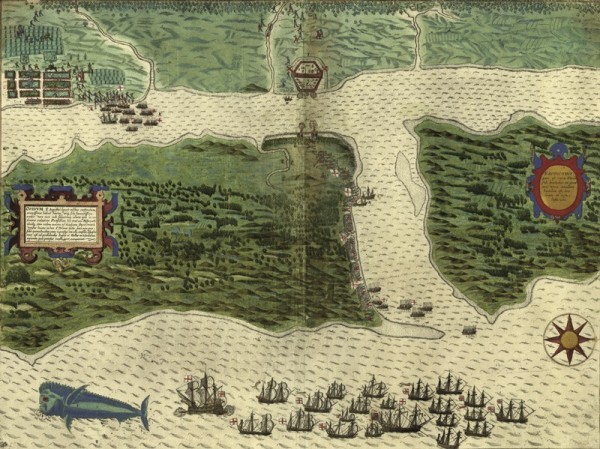
Baptiste Boazio, S. Augustini: pars est terra Florida, sub latitudine 30 grad, ora vero maritima humilior eset, lancinata et insulosa, 1589. (Hans and Hanni Kraus Sir Francis Drake Collection, Rare Books and Special Collections Division, Library of Congress.) Baptiste Boazio accompanied Francis Drake on his raid and burning of St. Augustine, May 28–30, 1586.
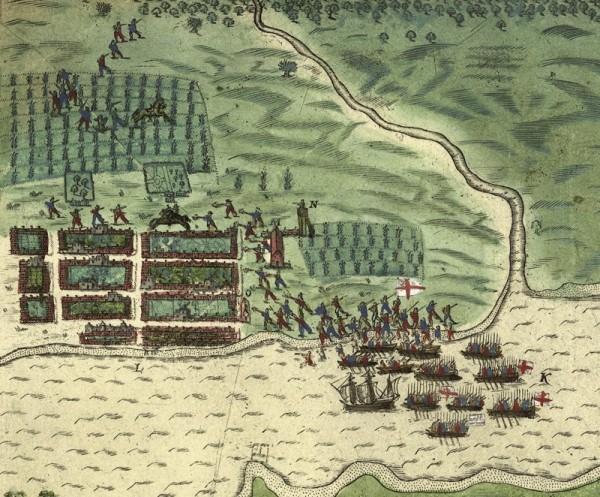
Detail of the map illustrated in fig. 1 showing the nine-block sixteenth-century area that is preserved today in the streetscape of the south part of St. Augustine.
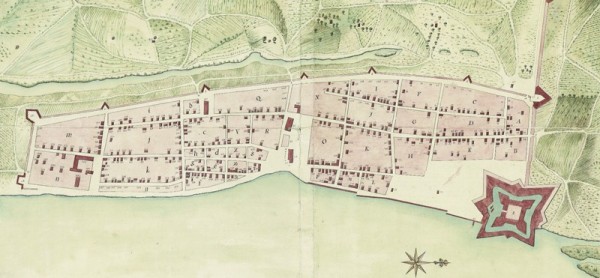
Elixio de la Puente, Plano de la Real Fuerza, Baluarte y Linea de la Plaza de St. Augustín de la Florida, 1764. (The University of Florida George A. Smathers Libraries, 975.918129993603445 [OCLC].) When Elixio de la Puente became the property agent for the departing Spanish landowners in 1763, he made this map, which identifies the owners and characteristics St. Augustine’s Spanish-owned properties at the end of the First Spanish Period. The street plan of the eighteenth-century walled city has remained in this configuration to the present day.
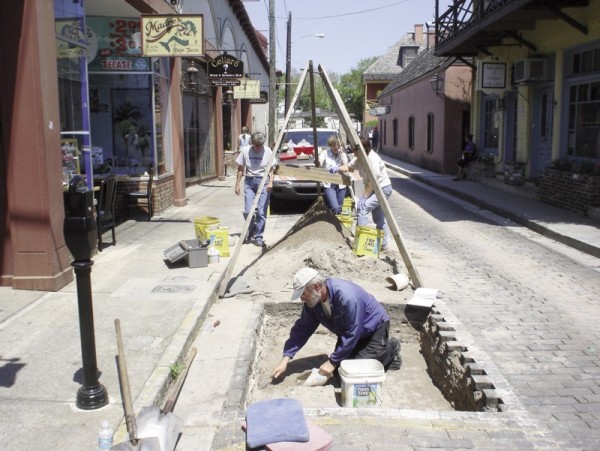
City of St. Augustine excavations are required to mitigate all building-related, ground-disturbing construction within the colonial city. Here, excavations on Aviles Street are underway ahead of an underground utility installation. (Photo, Ted Morris.)
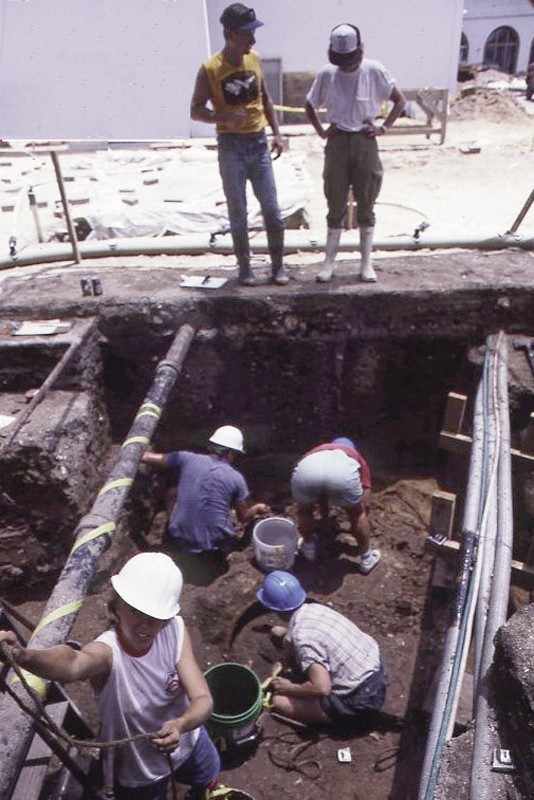
Barrel wells were used in St. Augustine from 1565 until the late eighteenth century, and most of the nearly intact ceramic vessels have been found in wells. This late-sixteenth-century well is being excavated at the site of the Convento de San Francisco, 8SA-24. (Courtesy, Florida Museum of Natural History.)
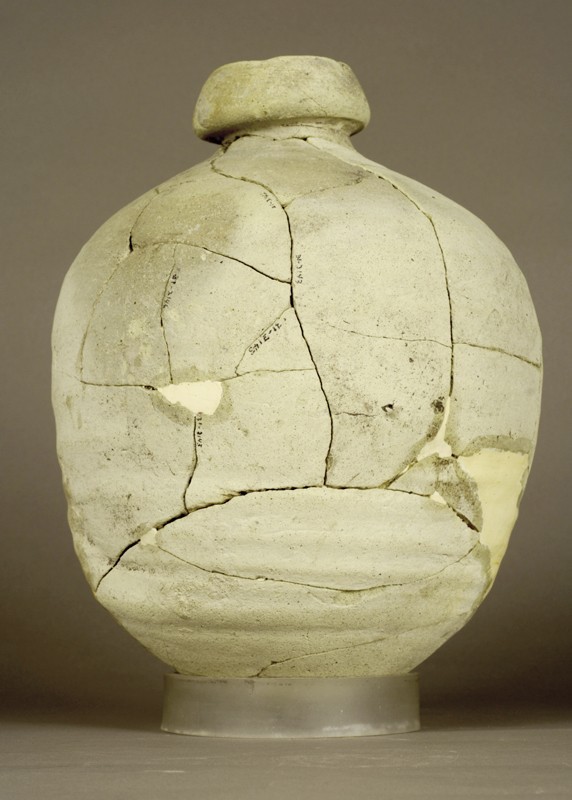
Middle-Style olive jar, probably Andalucia, Spain, ca. 1566. Unglazed earthenware. H. 11 5/8". (Courtesy, Florida Museum of Natural History, FLMNH 8SJ31-2006-3137; photo, Jeff Gage.) This jar had been deposited in a 1565–1566 well in St. Augustine.
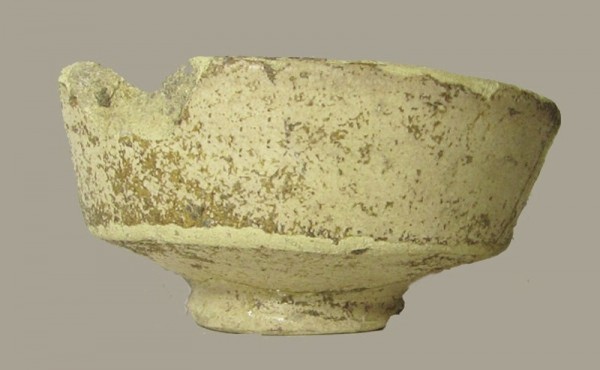
Columbia Plain escudilla (carinate bowl), Andalucia, Spain, ca. 1566. Tin-glazed earthenware. D. 4 3/4". (City of St. Augustine Archaeological Program Collection, BDAC #1998-0386; photo, Jeff Gage.) This majolica piece was deposited in a ca. 1580 household trash deposit in St. Augustine, is an example of Columbia Plain Gunmetal.
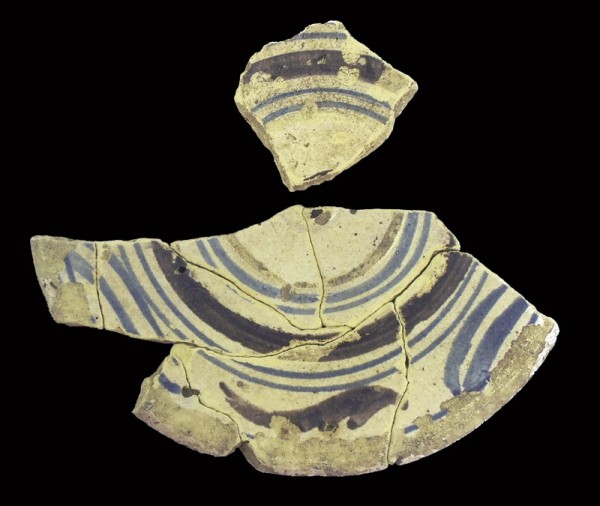
Isabela Polychrome majolica plate fragment, Andalucia, Spain, 1490–1580. Tin-glazed earthenware. D. 6 1/8". (City of St. Augustine Archaeological Program Collection BDAC # 1998-0386.) This plate had been deposited in the refuse area of a ca. 1585 Spanish household in St. Augustine.

Bacín (chamber pot), probably Spain, 1450–1750. Unglazed earthenware H. 9 13/16". (Florida Museum of Natural History, FLMNH SA26-1-422; photo, Jeff Gage.) This chamber pot had been deposited in a ca. 1600 well in St. Augustine.
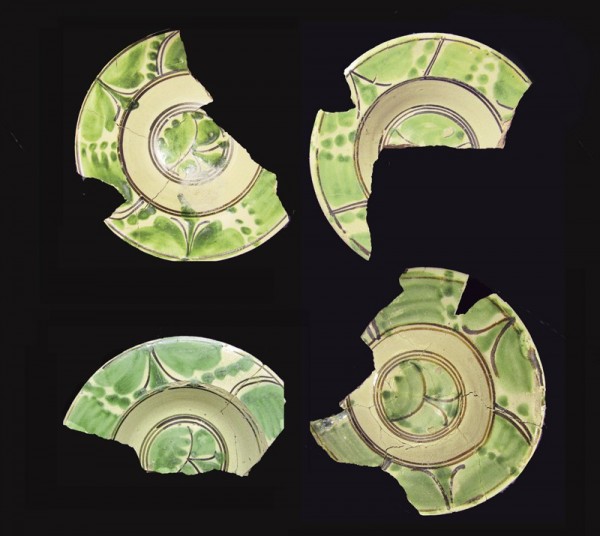
San Luis Polychrome majolica plates, Mexico City, Mexico, ca. 1650–1700. Tin-glazed earthenware. D. of upper right plate 10 15/16". (City of St. Augustine Archaeological Program Collection, BDAC # 1995-0751-F7.) These examples were recovered from a ca. 1700 St. Augustine trash pit.
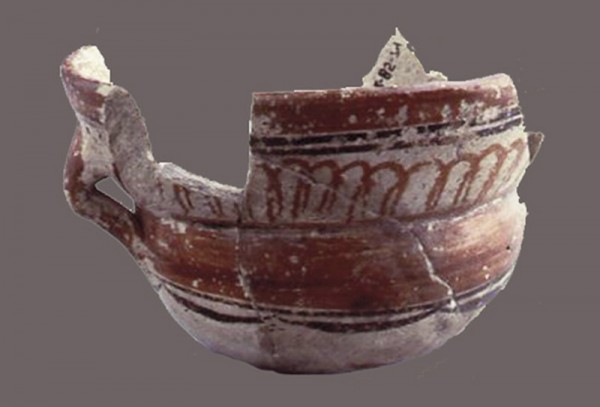
Guadalajara Polychrome vessel, Guadalajara, Mexico, 1650–1800. Painted and burnished earthenware. H. 3 3/8". (Florida Museum of Natural History, FLMNH SA34-2-85; photo, James Quine.) This vessel had been deposited in a ca. 1700 St. Augustine Spanish household trash pit.
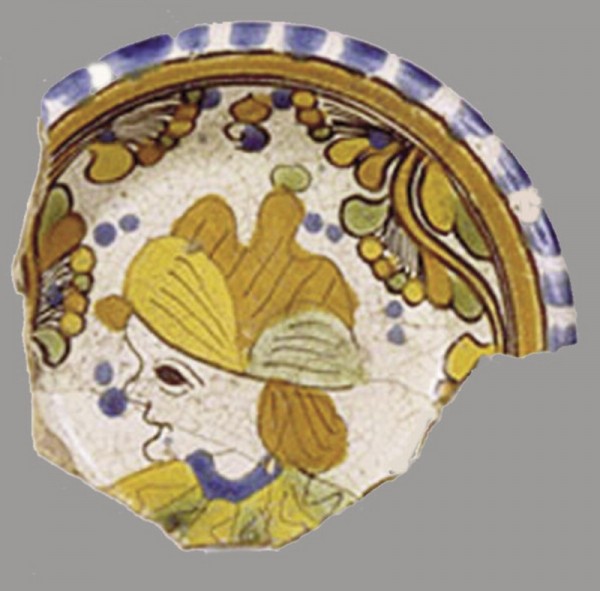
Abó Polychrome majolica plate, Puebla, Mexico, 1650–1700. Tin-glazed earthenware. D. 7 1/16". (Florida Museum of Natural History, FLMNH SA30-3-214; photo, Jeff Gage.) This plate was deposited in the trash pit of a St. Augustine Spanish household between 1680 and 1700.
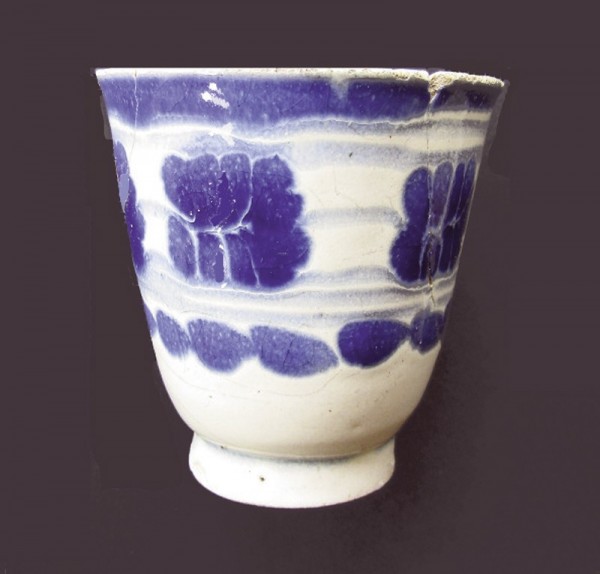
Puebla Blue on White pocillo (chocolate cup), Puebla, Mexico, 1650–1720. Tin-glazed earthenware. H. 4 1/8". (City of St. Augustine Archaeological Program Collection, BDAC # 2005-0503-F1.) This example had been deposited in the trash pit of a Spanish household in St. Augustine between 1700 and 1720.
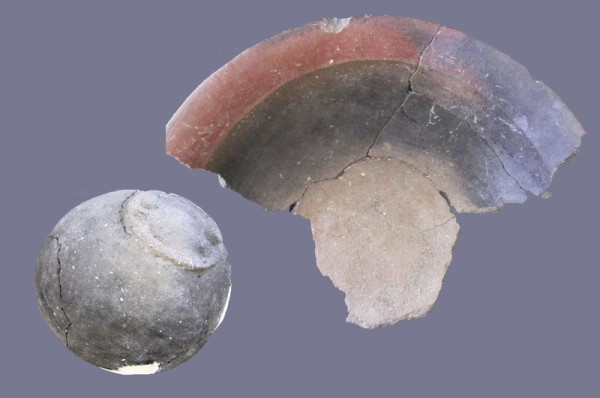
Colonoware bowls, St. Augustine, late seventeenth century. Low-fired, earthenware. D. of larger bowl 12 13/16". (City of St. Augustine Archaeological Program Collection, BDAC# 2016-B6L3-F10.) These bowls were found together in a ca. 1700 Spanish household trash pit.
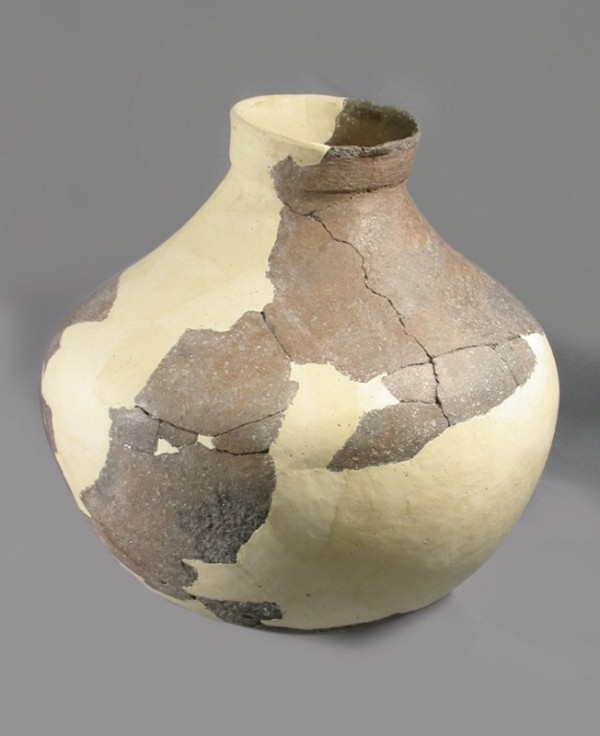
Colonoware jar, St. Augustine, Florida, early eighteenth century. Low-fired, shell-tempered earthenware. H. 15 3/8". (Florida Museum of Natural History, FLMNH SA7-4-223; photo, Jeff Gage.) This jar had been deposited in a ca. 1730 Spanish household well.
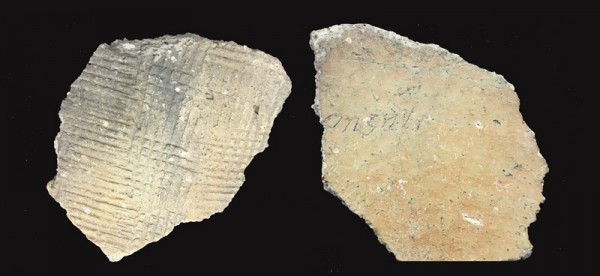
Jar or bowl fragment, San Marcos Stamped (Guale Indian tradition), St. Augustine, Florida, late seventeenth century. Low-fired earthenware. (City of St. Augustine Archaeological Program Collection, BDAC # 1992-0737-F24A.) This fragment has paddle-stamped decoration on the exterior surface and is inscribed “. . . onzalo” in the interior. It was deposited in a ca. 1680–1690 Spanish household well.
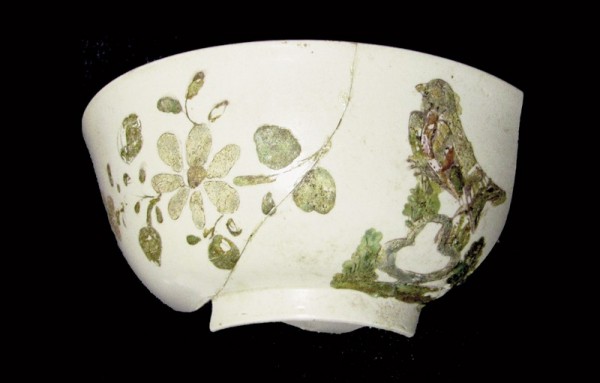
Polychrome enameled bowl, Staffordshire, England, 1740–1760. White salt-glazed stoneware. D. 4 5/16". (City of St. Augustine Archaeological Program Collection, BDAC # 2004-2000.) This bowl was found in the trash pit of a ca. 1750 St. Augustine household.
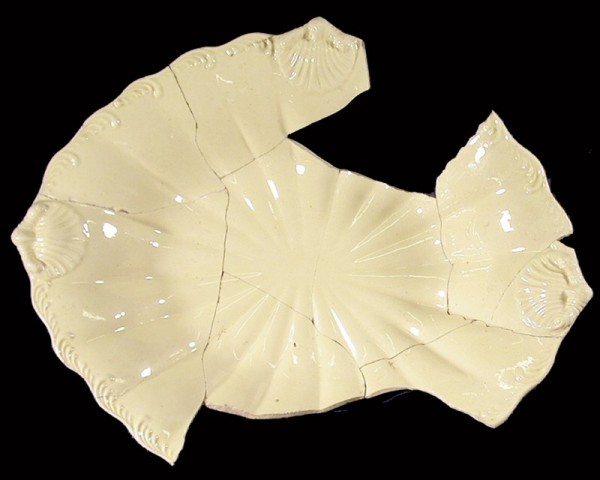
Serving dish, probably Staffordshire, England, 1762–1780. Creamware. L. 12". (Florida Museum of Natural History, FLMNH SA34-3-306/24; photo, Jeff Gage.) This fluted and molded dish, which has a feather-edge rim pattern, was recovered from a ca. 1770 St. Augustine refuse pit.
